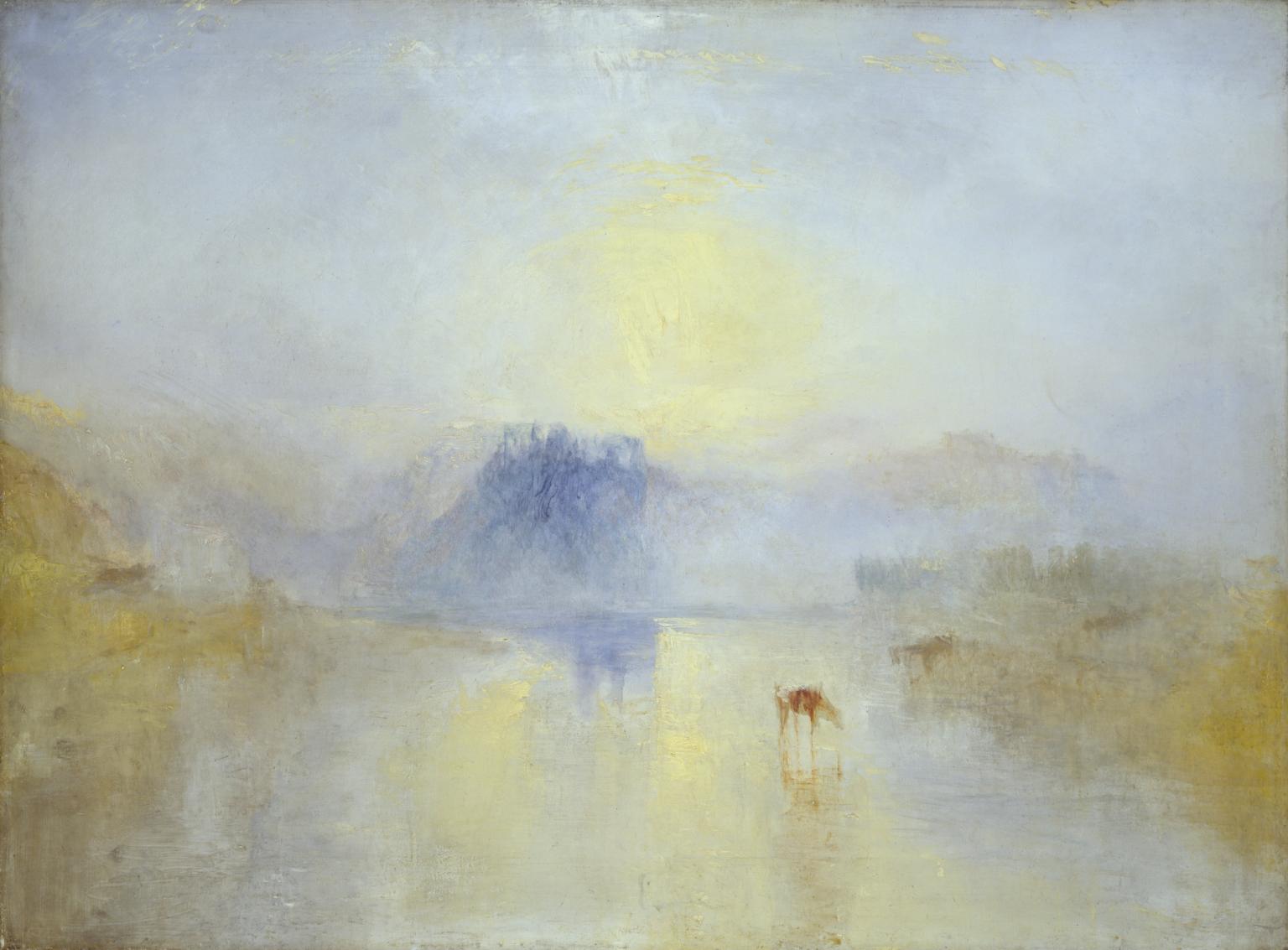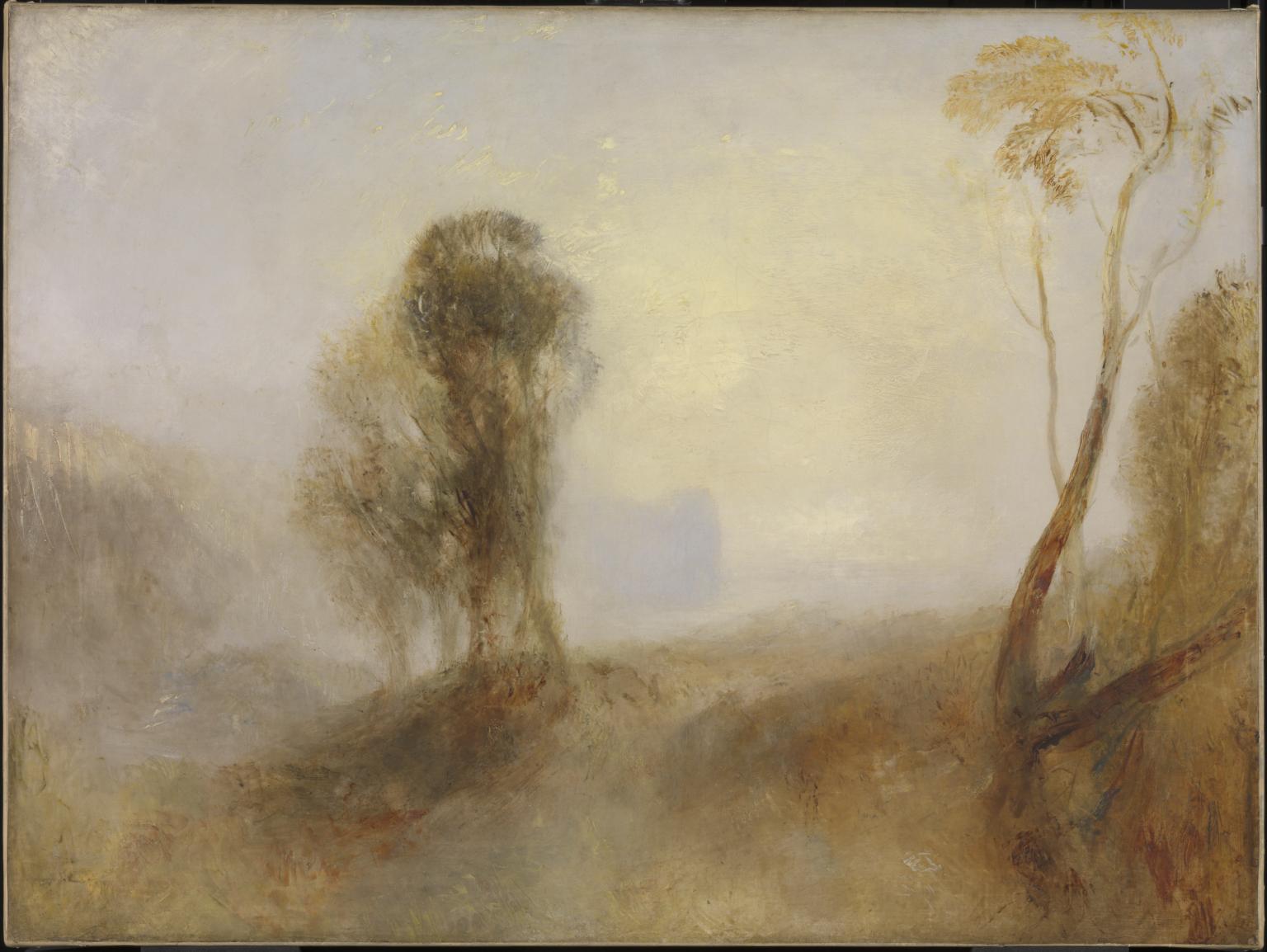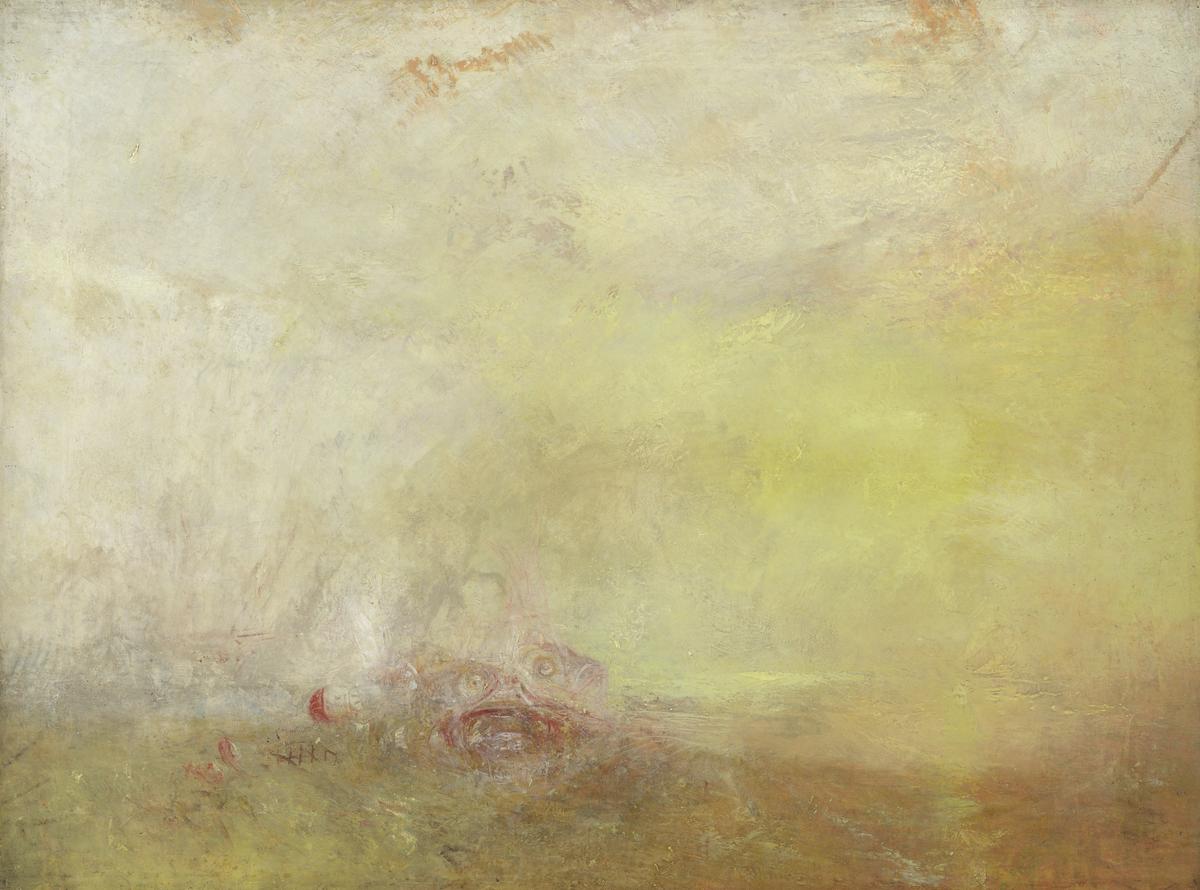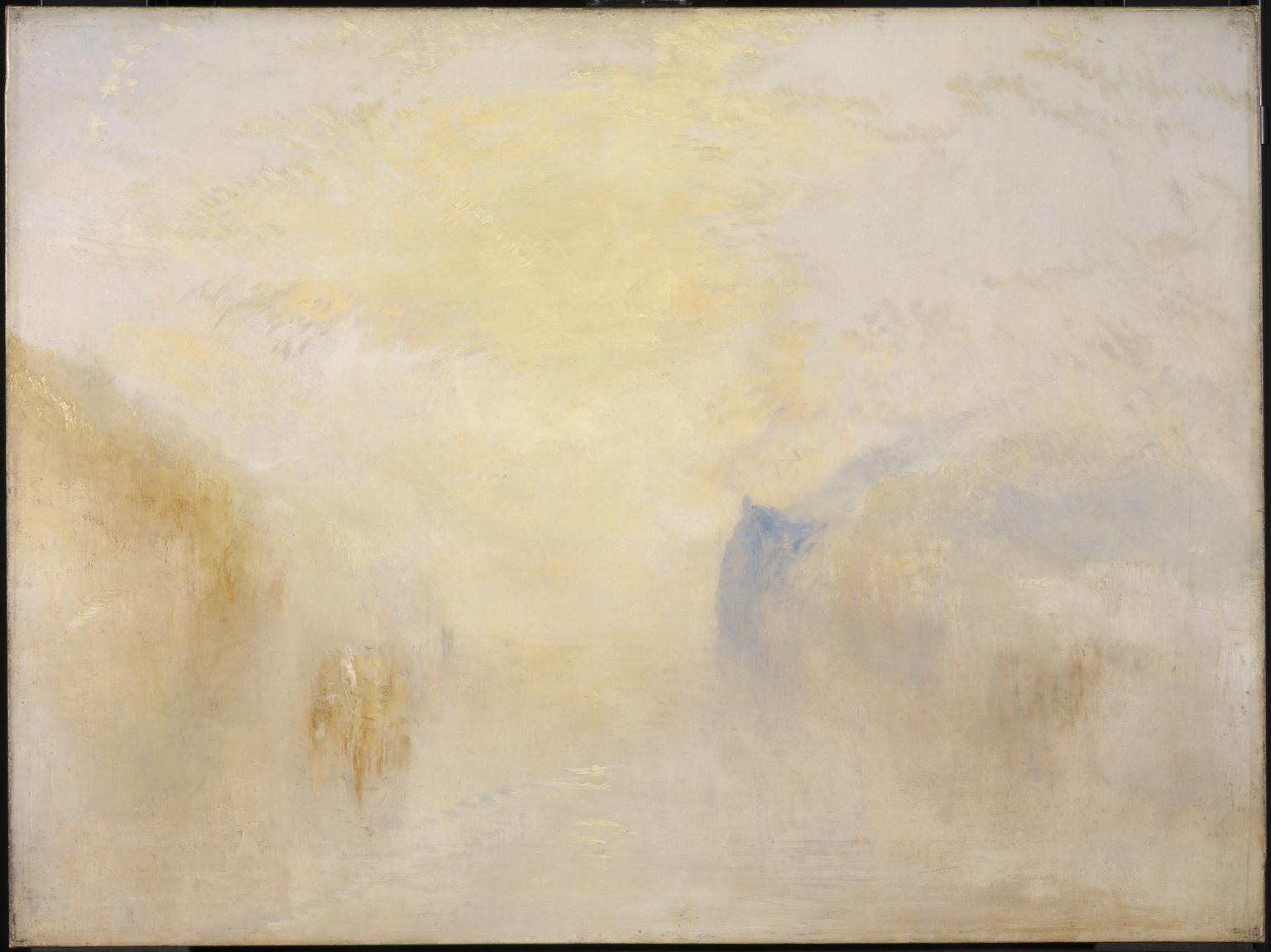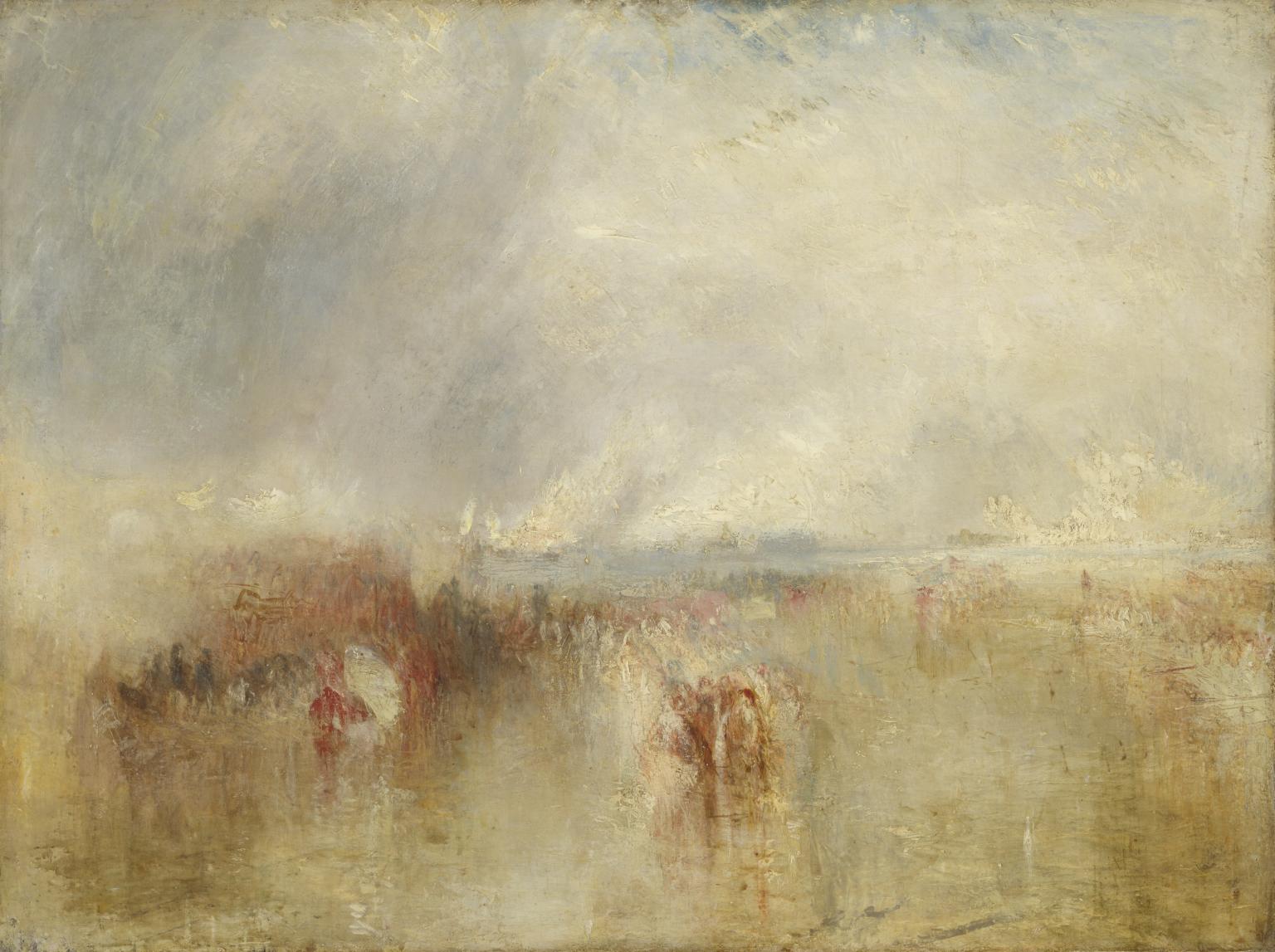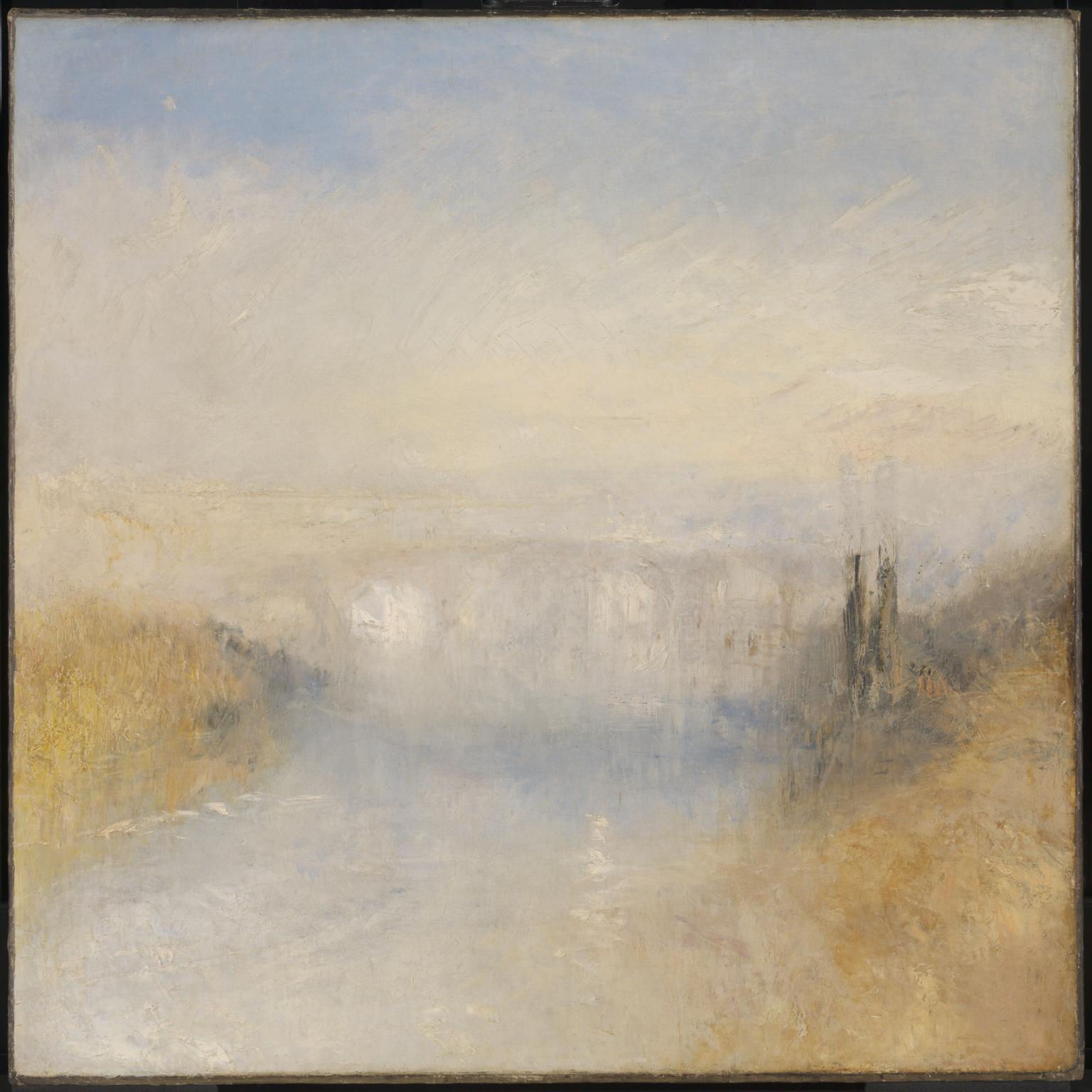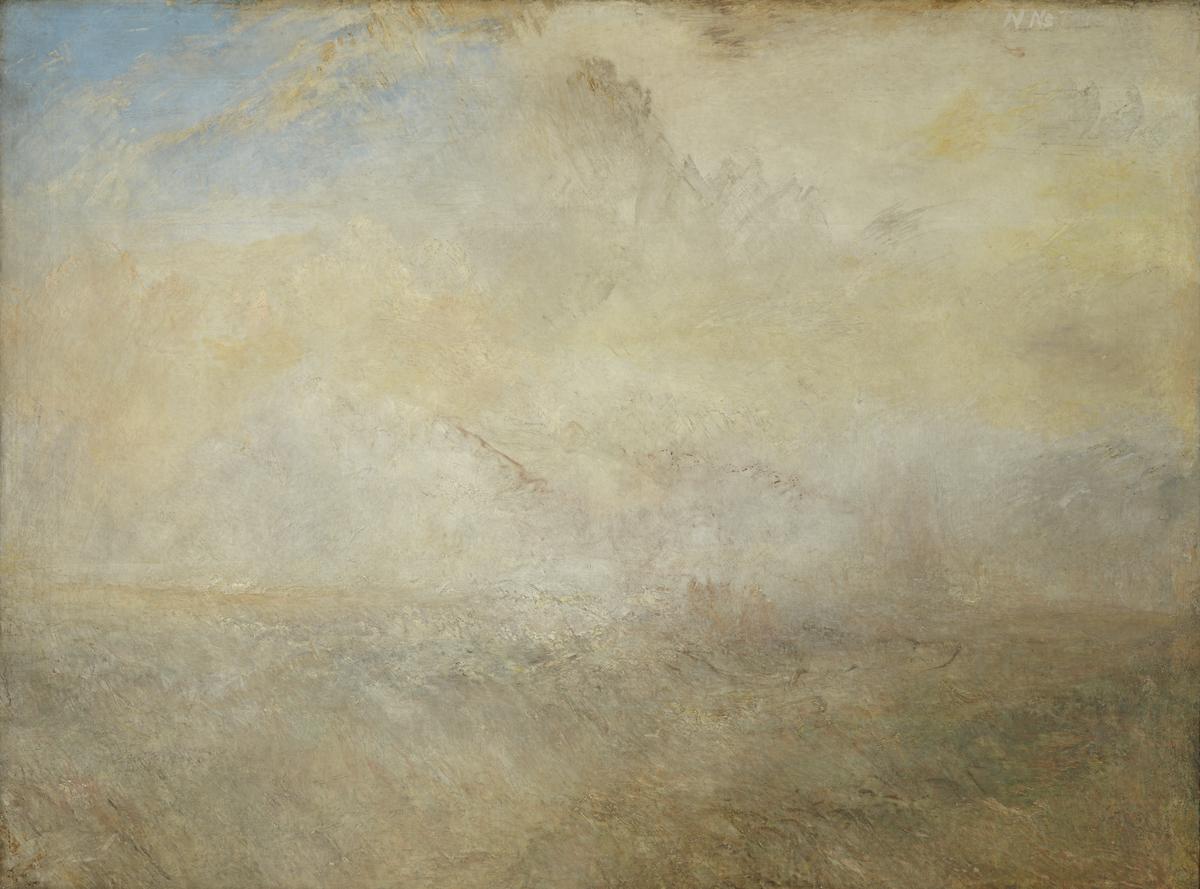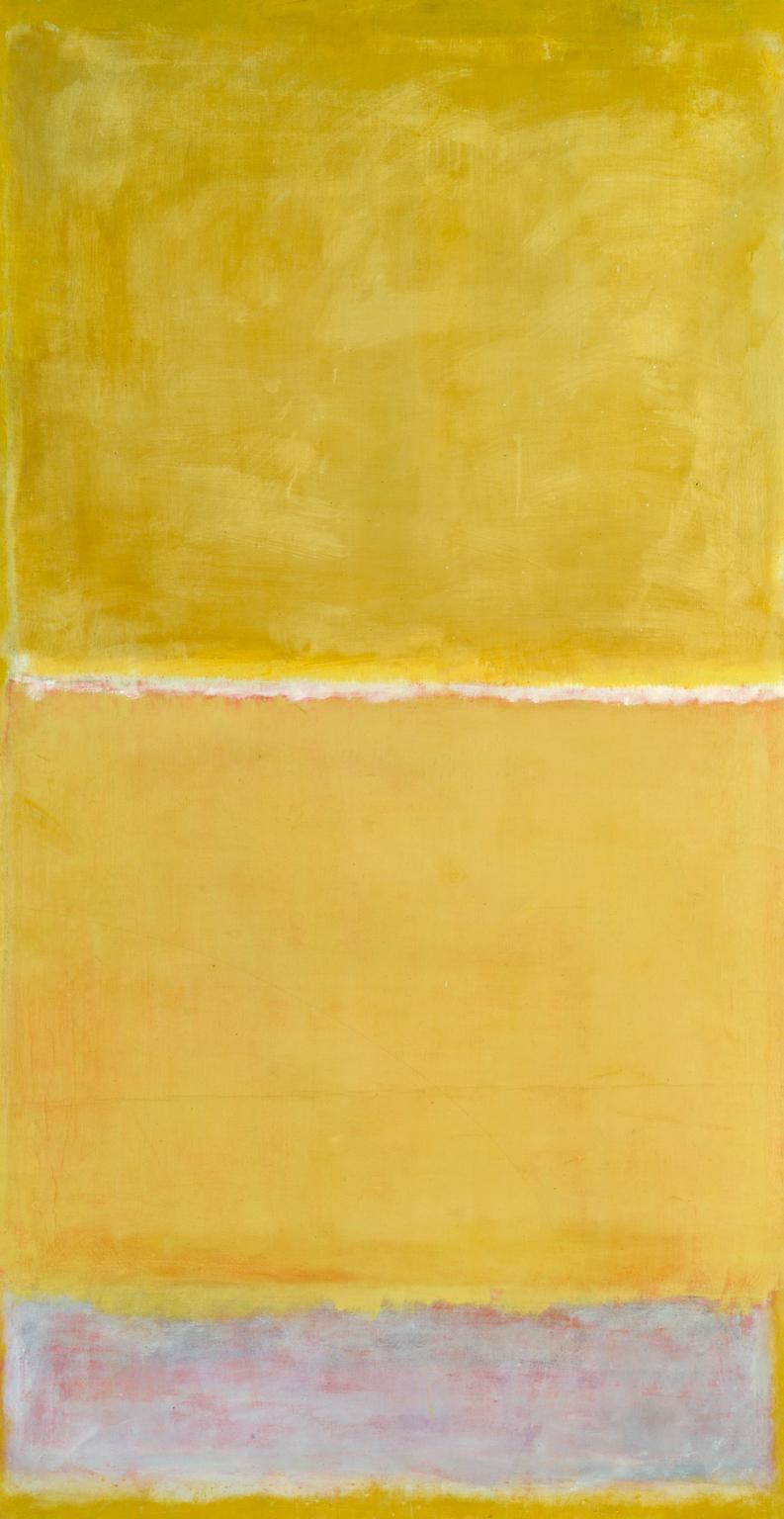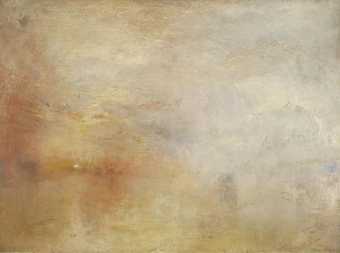9 rooms in JMW Turner
The paintings in this room have become celebrated examples of Turner’s boundary-pushing late style. And yet in his own lifetime they were unknown
These works were among the many unfinished paintings found in Turner’s studio after he died. Ethereal and luminous, they show Turner’s trailblazing focus on light and colour. There are no outlines – edges are blurred and colours blend into one another. Turner used thin layers of oil paint to create this effect, much like the way he used watercolour.
In some of these paintings Turner returns to decades-old subjects, re-imagining them in his mature style. He may have been aiming to exhibit these works, to show the public how his vision had evolved. Artists’ studios are places of experimentation. Turner’s was a very private space. He could be secretive about his working practices but also indulged in showmanship – on occasion he finished paintings in public just in time for exhibition openings. Those who did see him paint in his studio said he worked quickly, often working on several canvases at the same time.
An exhibition featuring some of these unfinished paintings was held in 1966 at the Museum of Modern Art (MOMA) in New York. This led to a fresh wave of interest in Turner’s work. Though Turner himself would not have regarded these paintings as ready to show in a public exhibition, it is fitting that some of his favourite compositions have gone on to become some of his most influential works. While they may appear ‘abstract’, they are rooted in subjects that held meaning for Turner.
Art in this room
